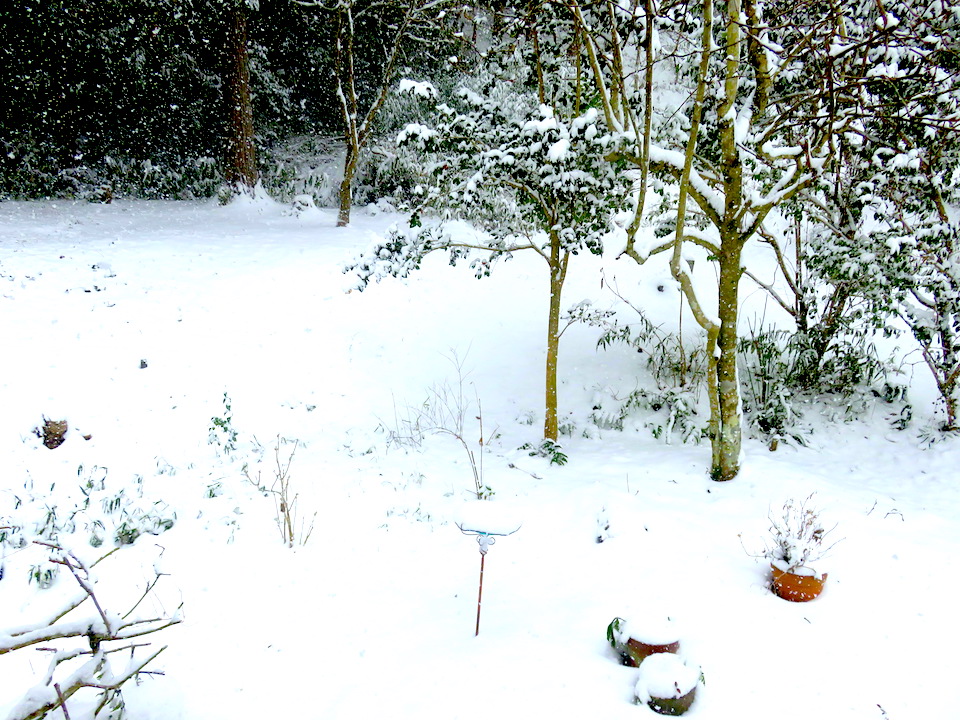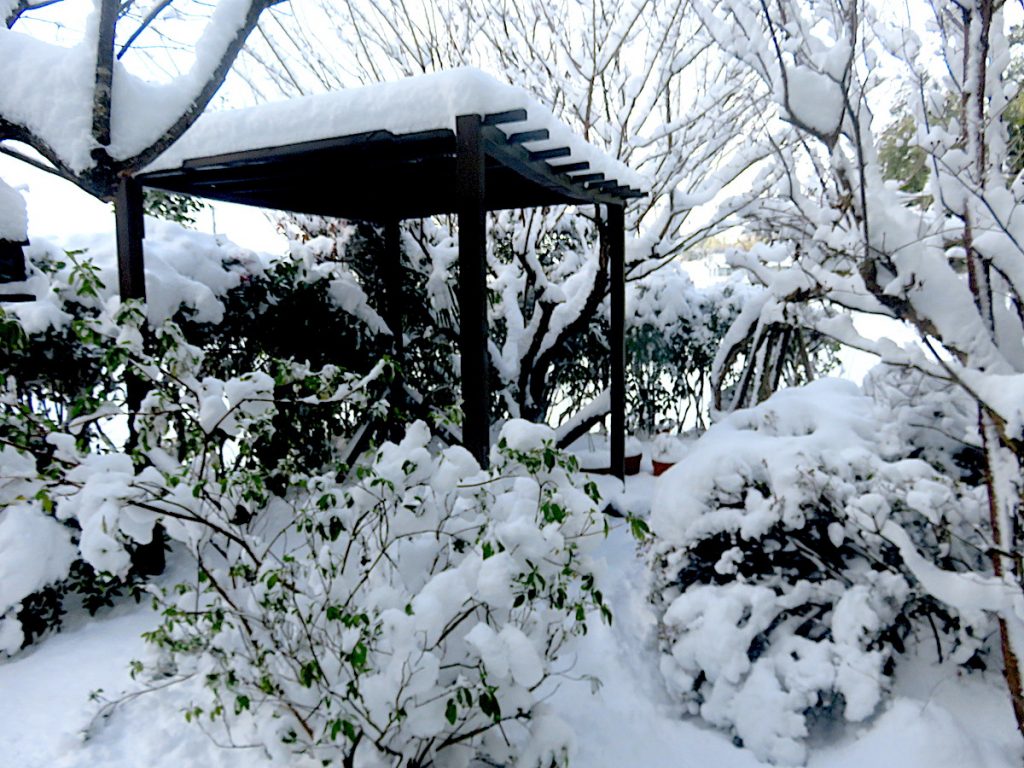I grew up and lived the first half of my life in Michigan. There, over the entire three months of winter, there’s tons of snow! Usually it snows at least twice a week, sometimes every day. I had a love-hate relationship with winter. I hated the chapped lips, the chapped hands, the frozen fingertips and toes, the constantly runny nose. At the same time, when it snowed it was SO BEAUTIFUL! Being out in a gentle snowfall is truly delightful. The snowflakes tumble and swirl, land on your skin and melt, and fill the entire air with a joy which is incomparable.
Then, of course, there’s the really fun stuff. Building snowmen — I guess ‘snow persons’ is more PC — having a friendly snowball fight, even shoveling the walk and drive, though hard work, had its rewards. Then, when the wind was right, the snow would drift. My last house in Michigan was a fairly large Dutch colonial with a balcony. Sometimes the drifts which accumulated against the house were two to three (6 – 10 feet) meters deep, so we’d jump off the balcony and end up with snow up to our eyebrows.
My best memories of winter were my childhood, specifically when I was 12, 13, 14. I’d ice skate every day after school on one of the many ponds which naturally occurred in the fields behind our mobile home. There was snow everywhere and if there was fresh snowfall, the skating session had to begin with shoveling the ice. Once enough of the surface was cleared, we would skate under the sky or canopy of clouds, until we couldn’t feel our toes any longer. My dad made me a hockey net and I practiced and practiced. I got good enough that when I was 14, I went out for a hockey team and became first string center!
Enough nostalgia.
Japan gets its share of winter. The northernmost prefecture — a prefecture is the equivalent of a state — is Hokkaido. It has weather very much like Michigan, with tons of snow. Hokkaido has a fleet of snow removal trucks, just like the Midwest in America. And great skiing!
But where I live, the winters are very mild. This year has been cold but lacking much snowfall. It snowed a couple times but only lightly, and the temperature was mostly above freezing, so the snow disappeared within a couple hours of appearing.
Two years ago, we had some serious winter storms. I reached into my photo archive. This is the neighborhood where I live two years ago.

And here are some photos of a walk I took then to our local shrine.
However, I have to close with a slight correction. Here I am writing about not having much snow this year. But I waited an extra day to finish this article. Ironically, overnight we got a major blizzard and it’s still snowing! I would guess we’re going to get 2-4 inches, which to be sure is a lot for this town. So far it looks like this . . .

I tested it. It’s great packing snow, perfect for a ‘snow person’.
Gotta go!

















Alisha Idlewild Performs “War Is Making Us Poor”
California folk-rock artist, Alisha Idlewild, performs “War Is Making Us Poor”. The talented Ms. Idlewild offers her fans a variety of songs, touching on the environment, human relationships, the rights of indigenous people, spirituality, and world peace.
Her voice has a sweetness and sincerity that reminds me of the antiwar songs of the 60s and 70s. Enjoy!